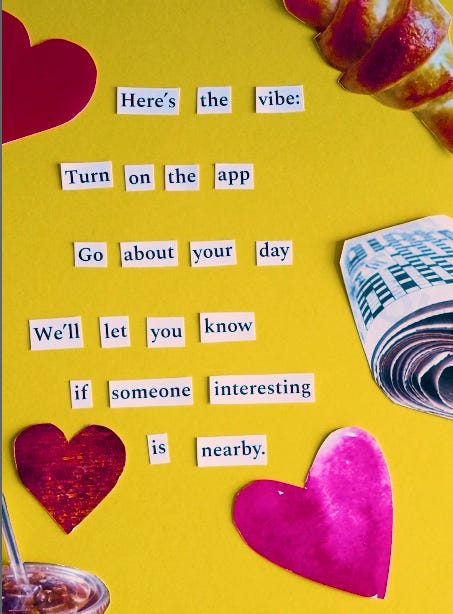March 2025 Trend Report
A meet cute in Roku City
Welcome to the inaugural report from neuewave!
We're thrilled to officially launch our exploration of trends and culture, specifically how they manifest in online behavior and conversations. As we begin, we want to set the stage. If you haven't already, we encourage you to read our introductory article, 'Welcome to Neuewave,' where we outlined our mission: to foster understanding, offer our perspective, and spark meaningful conversations. We're not here to claim absolute authority or infallible insights. In fact, we embrace the possibility of being wrong, as it encourages us—and you—to challenge conventional thinking about culture and the online landscape.
Also, it is really difficult to pick what to write about when we talk about trends.
Not only does culture move fast, but we live in a world of infinite corners, communities, and subsections of conversations making it hard to hone in on what allegedly “everyone is talking about”. Within our agency, we're constantly reminded of the diversity of our personal feeds, and we expect—and hope—yours differ as well. These are trends identified to be equalizers and call on public truths many can relate to, even if you aren’t privy to the Roku City lore, or wish the Anglerfish discourse was featured. Don’t worry, I wish I could have gotten it in there too.
With that, we've identified four key trends that have captured our attention as we get into March. Let's dive in.
#1 The Meet Cute is Back… Kinda.
The charm of the “meet cute,” once relegated to classic rom-coms, is experiencing a significant resurgence with a twist, signaling a shift in how people perceive and seek connections. The cultural shift towards seeking "meet cutes" and organic connections, seen in the resurgent popularity of romance novels, coupled with the recent decline of dating app usage for younger generations, who now want to focus on finding their soulmate IRL, leads us to think that younger generations are exclusively interested in traditional dating.
However, this desire for real-life interaction is complicated by social anxiety surrounding approaching strangers in public, which uniquely affects the generations that have primarily made or supplemented relationships online. While singles events and speed dating for Gen Z and Millennials have seen a 49% increase in attendance, this trend suggests a demand for not just in-person encounters, but curated ones that bridge the gap between digital and spontaneous encounters.
These events offer a structured environment, mitigating the uncertainties of casual approaches, while still providing the opportunity for in-person connection. Essentially, young people are seeking a middle ground: escaping the limitations of online profiles while retaining a sense of control and reducing the perceived risk of traditional, unmediated interactions.
Showing Up On Social:
Not to forgo mentioning the massively popular Meet Cutes NYC that highlight meet cutes or Streethearts that facilitate them, but a new dating app has launched in NYC blending the dating app with a focus on facilitating real-world 'meet cutes' through ‘Pokemon Go’ style alerts when a match is in the area speaks to the broader yearning on behalf of younger generations for a return to unexpected, organic connections.
#2 Brand 🤝 Betrayed
There are few things more beloved on the internet than getting the tea on the most recent betrayal, whether it be romantic, professional, or platonic. While it is commonplace for massive drama mills to churn on a celebrity breakup or unexpected moment, we’re seeing the beginnings of brands directly facilitating, perpetuating, or capitalizing on The Drama™. Not to be mistaken with brands simply commenting on or joining the online discourse (like every brand mascot who ironically claimed they would buy TikTok to save the US), we are seeing an increase in brands directly partnering with the people who have been betrayed to generate engagement.
Showing Up On Social:
On the heels of 2023’s Scandoval, Ariana Maddix became the It Girl spokesperson for various brands, including Duracell, Glad, and Red Robin, all producing content that directly fueled or referenced the betrayal Ariana experienced and the unsavory comments made by her ex-boyfriend. Fast-forward to 2025, we have seen this exact scenario resurface on a smaller scale following the very strange and public breakup of beloved “Bachelor” couple Matt James and Rachel Kirkconnell. With the internet behind Rachel, Brawny decided to take a page out of the Maddix book to feature Kirkconnell in a social media video referencing the restaurant conflict that initiated their breakup.
This doesn’t just apply to bad ex-boyfriends and wronged ex-girlfriends, but has recently extended to “betrayed” NBA star Luka Dončić, after a shocking late-night trade rocked the sports world, leading to both Dallas Mavericks fans and the rising star feeling betrayed and blindsided.
From body language analysis to reports of his emotional state, media outlets fueled the public perception of his hurt. Subsequently, Jordan Brand leveraged this narrative by featuring Dončić in a social media video coinciding with his first game against his former team. The video depicted a symbolic shift from Texas to California, accompanied by the tagline "Full Tank. No Mercy," further amplifying the "betrayal" storyline.
This example illustrates a growing marketing strategy that uses perceived betrayal to generate engagement, a trend likely to continue as audiences show excitement for revenge campaigns and identifying a hero and a villain in the entertainment content they consume.
#3 Crypto Struggles to Beat the Unserious Allegations
Everything in me wanted to avoid talking about crypto or AI, at least for the first edition, but the crazy world of memecoins has become too prevalent to be ignored. We know memecoins, even if you think you don’t. They are a type of crypto asset inspired by internet memes, characters, current events, or trends for which the promoter seeks to attract an enthusiastic online community to purchase the meme coin and engage in its trading (remember Dogecoin? Of course you do!).
While celebrity-backed memecoins have undeniably drawn attention and excitement to the crypto space, they've also significantly damaged its reputation. Once viewed as the future of finance by a dedicated few, crypto is now increasingly perceived as a mere internet joke by the broader public. These speculative tokens, centered on internet celebrities and meme culture, are diverting attention from legitimate blockchain initiatives. Platforms like pump.fun have accelerated this trend, further blurring the line between serious technology and online amusement. While crypto already had an uphill battle to legitimacy by the public, becoming an internet meme surely increases the struggle.
Showing Up On Social:
The speculative tokens centered around internet celebrities have become so closely watched, especially following the instance of the Hawk Tuah girl, who manipulated the price and then sold off her holdings of her own memecoin in late 2024. Particularly fascinating was the saga of a 13-year-old streamer making and dumping a self-made coin, then following with two more coins after serious online backlash—one called ‘im sorry’ ($SORRY), and another called ‘my dog lucy’ (LUCY) after people threatened to dognap his family pet.
Most recently, this has culminated in an internet spectacle: the official NBA Twitter was allegedly hacked in order to launch and profit from a fake memecoin, NBA coin. The fact that it was even believable to the general public tells us that memecoins are the next installment of meme-culture that could have some of the most dangerous effects yet.
#4 All About Ambience
Ambient content, defined as non-intrusive, immersive media designed to create a calming and sensory-rich experience, has seen a significant surge in popularity as individuals seek respite from the chronic stress of modern life.
Building upon the "gongbang" trend of the early 2020s, which emphasized focus, destimulation, and relaxation by watching people study, and the broader consumption of long-form content in 2025, people are increasingly looking to escape the constant stimulation of their digital environments and find long moments of tranquility.
However, this desire for ambient content and experiences is not solely about escaping overstimulation; people are also seeking a different kind of engagement, one that lulls them in a way familiar, yet sometimes overwhelming, swipe feed.
This affinity for ambient scenes helps explain the internet's fascination with Roku City, Roku's animated screensaver, which lulls viewers into a positive sensory trance where people genuinely yearn to transport to.
This trend's prominence is further evidenced by brands like Belmond releasing their "Long Shots" series, featuring hour-long, visually stunning ambient scenes of their luxury travel destinations, and Google integrating ambient TV screens into their latest models, effectively turning living rooms into tranquil digital landscapes.
Showing Up On Social:
Roku City obsession aside, the current "Hozier yell" trend is a small example of this non-intrusive sensory experience, where people overlay Hozier's powerful vocals from his song ‘Northern Attitude’ onto serene, ambient visuals, highlights the desire to blend intense emotional expression with calming aesthetics online. It's a fascinating juxtaposition that resonates with a generation seeking emotional release within a soothing context.
And there you have it, folks—a whirlwind tour through the delightfully bizarre corners of our current cultural landscape. From the romantic resurgence of the 'meet cute,' with a modern twist, to brands capitalizing on public betrayals, we've seen how the internet's appetite for drama and connection continues to evolve. All four of these trends outlined call to a broader pushback against the artificiality and monotony that can accompany our heavily digital lives– whether it be rebellion toward trance-like tranquility, to full-blown financial scandals.
This dichotomy is reshaping online content.
We see a rise in both serene, cozy creators offering tranquil escapes and brands like Nutter Butter embracing chaotic online personas. Both extremes offer a break from the monotony, either by completely dissipating or dramatically amplifying the stimulation we experience daily. This reflects a broader desire for experiences that feel real, unfiltered, and engaging, whether through calming tranquility or exhilarating unpredictability.







